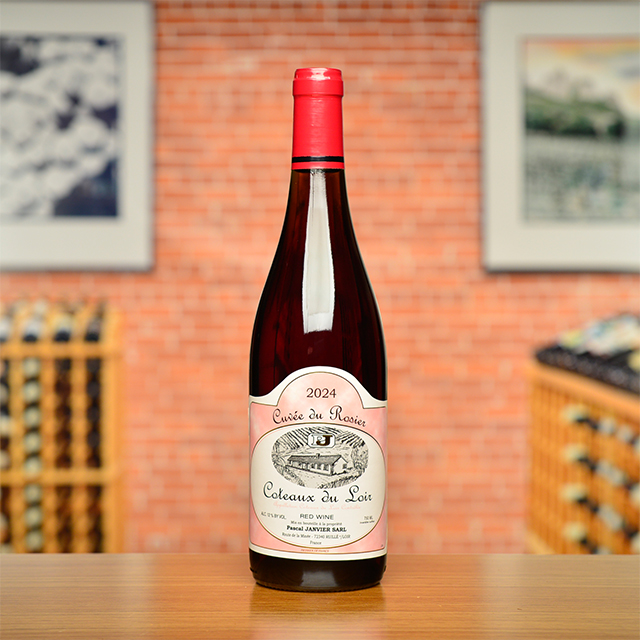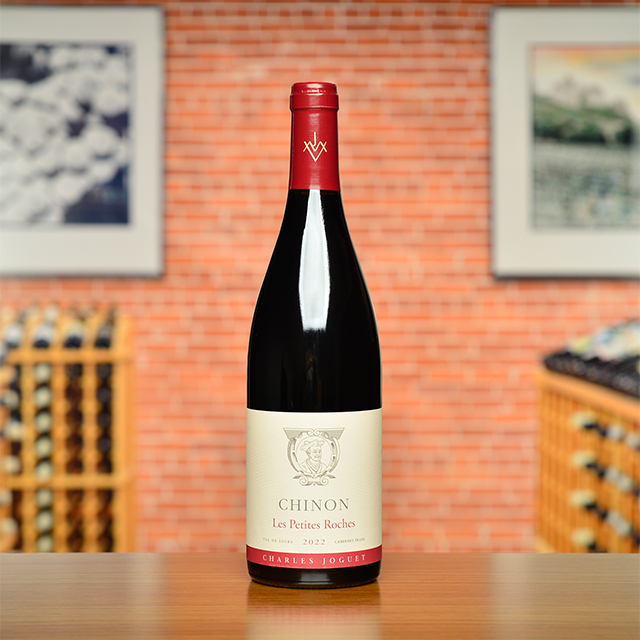Notify me
2011 Muscadet Sèvre et Maine “Réserve”
Domaine Michel Brégeon
Due to arcane laws surrounding the mention of sur lie on a bottle of Muscadet, any wine carrying the designation must be aged “on its lees” for a predetermined period of time, but if it surpasses a year on its lees, it can no longer call itself “sur lie.” Go figure. This 2011 spent forty months on its lees in underground, glass-lined tanks beneath Michel Brégeon’s winery in Gorges. When you smell it, keep in mind that no other wine, besides a Melon de Bourgogne grown in the gabbro soil of Gorges, could possibly smell like this one does. Gabbro is an igneous rock most often found in the earth’s crust beneath the ocean and forms, in my opinion, the greatest terroir on earth for Melon de Bourgogne.
—Dixon Brooke
| Wine Type: | white |
| Vintage: | 2011 |
| Bottle Size: | 750mL |
| Blend: | Melon de Bourgogne |
| Appellation: | Muscadet Sèvre et Maine |
| Country: | France |
| Region: | Loire |
| Producer: | André-Michel Brégeon |
| Winemaker: | Fred Lailler |
| Vineyard: | 40 years average, 7.8 ha total |
| Soil: | Gabbro |
| Farming: | Organic (certified) |
| Production: | 3000 cases |
| Alcohol: | 12% |
More from this Producer or Region

2024 Coteaux du Loir Rouge “Cuvée du Rosier”
France | Loire
This red is 100% Pineau d’Aunis, an indigenous red grape we hold dear to our collective hearts because of its mystifying aromatics and bright, juicy texture.

2023 Saumur Mousseux “Bulles de Roche”
France | Loire
This sparkling wine has decadently rich, honeyed fruit and a nice dollop of buttery brioche.

2020 Saumur-Champigny “Franc de Pied”
France | Loire
This Saumur Champigny is electric and alive, from the first scent of roses on the nose to the juxtaposition of textured tannic grip and sheer weightlessness on the palate.

2022 Muscadet Sèvre et Maine “Réserve”
France | Loire
When you smell it, keep in mind that no other wine, besides a Melon de Bourgogne grown in the gabbro soil of Gorges, could possibly smell like this one does.

2024 Bourgueil Rosé “La Ritournelle”
France | Loire
Brisk red-fruited twang, some herbaceous zest, and an absolutely mouthwatering zingy finish.

2022 Chinon “Les Petites Roches”
France | Loire
Showing off Cabernet in its most delicate, charming form, rife with aromas of roses, damp earth, and little red berries.

2018 Muscadet Sèvre et Maine “Gorges”
France | Loire
Gorges boasts an incredible texture and tension imparted by decomposed, blue-green igneous rock, seventy-year-old vines, and years-long aging on the lees.

2023 Muscadet Sèvre et Maine Sur Lie
France | Loire
It fills the mouth with suspicions of honeysuckle and pulpy stone fruits, all while maintaining classic notes of iodine and sea breeze that make this the vinous equivalent of tidepooling.

2021 Vin de France Blanche
France | Loire
This skin-contact wine is redolent of blood orange and hyssop—a perfect apéritif for olives and anchovies.

2020 Vin de France Blanche
France | Loire
This lithe and expressive “orange” wine is an ideal palate-opener with a dry, cleansing finish and a fresh, cooling effect like coastal sage and seaspray.
About The Producer
André-Michel Brégeon
Michel Brégeon is part renegade, part crusader, and full-blown terroirist, ardently defending the Muscadet-Sèvre-et-Maine terroir. Thanks to his deep understanding of the land, he plays the game much differently than the region’s caves cooperatives and negociants, who produce en masse and lose the subtlety of the appellation. He worked for his family’s domaine before setting out on his own in 1975. When his father retired in 1989, he gave his remaining vineyard land to Michel. Today, Michel farms seven hectares of vineyards in clay, silica, and gabbro soils. Gabbro is old, blue-green, volcanic rock, rarely found in vineyard land. Formed by magma eruptions under the ocean floor, it imparts intense complexity to Michel’s wines.
About The Region
Loire

The defining feature of the Loire Valley, not surprisingly, is the Loire River. As the longest river in France, spanning more than 600 miles, this river connects seemingly disparate wine regions. Why else would Sancerre, with its Kimmeridgian limestone terroir be connected to Muscadet, an appellation that is 250 miles away?
Secondary in relevance to the historical, climatic, environmental, and cultural importance of the river are the wines and châteaux of the Jardin de la France. The kings and nobility of France built many hundreds of châteaux in the Loire but wine preceded the arrival of the noblesse and has since out-lived them as well.
Diversity abounds in the Loire. The aforementioned Kimmeridgian limestone of Sancerre is also found in Chablis. Chinon, Bourgueil, and Saumur boast the presence of tuffeau, a type of limestone unique to the Loire that has a yellowish tinge and a chalky texture. Savennières has schist, while Muscadet has volcanic, granite, and serpentinite based soils. In addition to geologic diversity, many, grape varieties are grown there too: Cabernet Franc, Chenin Blanc, Sauvignon Blanc, and Melon de Bourgogne are most prevalent, but (to name a few) Pinot Gris, Grolleau, Pinot Noir, Pineau d’Aunis, and Folle Blanche are also planted. These myriad of viticultural influences leads to the high quality production of every type of wine: red, white, rosé, sparkling, and dessert.
Like the Rhône and Provence, some of Kermit’s first imports came from the Loire, most notably the wines of Charles Joguet and Château d’Epiré—two producers who are featured in Kermit’s book Adventures on the Wine Route and with whom we still work today.
More from Loire or France
2024 Val de Loire Sauvignon Blanc “Unique”
Domaine du Salvard France | Loire
2023 Bourgueil “Trinch!”
Catherine & Pierre Breton France | Loire
2024 Cheverny
Domaine du Salvard France | Loire
2020 Saumur Blanc “L’Échelier”
Thierry Germain France | Loire
2020 Saumur Champigny “Outre Terre”
Thierry Germain France | Loire
2020 Vin de France Rosé Grolleau/Cabernet Franc “Les Arceaux”
Grange Saint-Sauveur France | Loire
2022 Chinon “Cuvée Terroir”
Charles Joguet France | Loire
2023 Muscadet Côtes de Grand Lieu sur lie “La Nöe”
Eric Chevalier France | Loire
2020 Chinon “Les Varennes du Grand Clos”
Charles Joguet France | Loire
2022 Chinon “Le Domaine”
Bernard Baudry France | Loire
2021 Saumur Champigny “Terres Chaudes”
Domaine des Roches Neuves France | Loire
2024 Reuilly Pinot Gris Rosé
Domaine de Reuilly France | Loire
2024 Val de Loire Sauvignon Blanc “Unique”
Domaine du Salvard France | Loire
2023 Bourgueil “Trinch!”
Catherine & Pierre Breton France | Loire
2024 Cheverny
Domaine du Salvard France | Loire
2020 Saumur Blanc “L’Échelier”
Thierry Germain France | Loire
2020 Saumur Champigny “Outre Terre”
Thierry Germain France | Loire
2020 Vin de France Rosé Grolleau/Cabernet Franc “Les Arceaux”
Grange Saint-Sauveur France | Loire
2022 Chinon “Cuvée Terroir”
Charles Joguet France | Loire
2023 Muscadet Côtes de Grand Lieu sur lie “La Nöe”
Eric Chevalier France | Loire
2020 Chinon “Les Varennes du Grand Clos”
Charles Joguet France | Loire
2022 Chinon “Le Domaine”
Bernard Baudry France | Loire
2021 Saumur Champigny “Terres Chaudes”
Domaine des Roches Neuves France | Loire
2024 Reuilly Pinot Gris Rosé
Domaine de Reuilly France | Loire
Kermit once said...

Kermit once said...
Let the brett nerds retire into protective bubbles, and whenever they thirst for wine it can be passed in to them through a sterile filter. Those of us on the outside can continue to enjoy complex, natural, living wines.
Inspiring Thirst, page 236
















